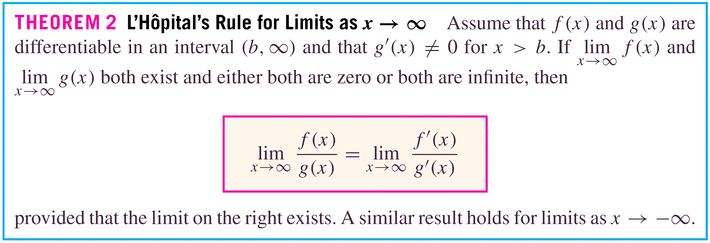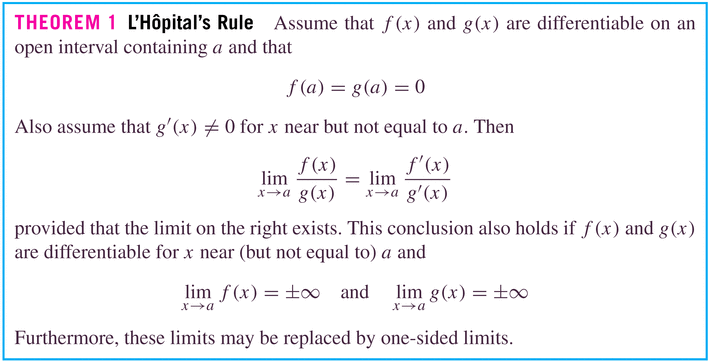- You have a homework due, 6.6.
- Your test next week will be through 7.1, which we'll start today.
- Did anyone go to the first STEM pizza party?
- I've reserved computer lab 310 for this Friday, 9/12, at 9:00. So those who are able may join me as we go over some of the basics of Mathematica. I've also reserved it for a couple of more Fridays, the 26th of September and the 3rd of October.
- In financial mathematics we tend to use an unusual base for an
exponential:
- You may have encountered a few laws such as The rule of 72 (70, 71,
69.3,...) to calculate doubling time: forget them! Just do the
math: the question is
For what value of t is ?
Solving for t in
, we get
where n is the number of compoundings per year, and r is given as a decimal (e.g. 9% is represented by .09). This is the doubling time.
When compounding is continuous (i.e.
), this reduces to the very lovely rule
- Now, how do we know that
?
?
The answer, of course, is L'Hopital's Rule, which is useful in solving certain indeterminate limits:

Let's rewrite it a little: we want to show that
- Here's the general situation:

- And if the limit of the quotient of the derivatives is
indeterminate, then iterate -- that is, do it again! Then work with the
ratio of the second (or higher) derivatives.
- Motivation of L'Hopital's Rule (requires the limit definition
of the derivative -- p. 471) in the case where
and
.
Consider
- Examples:
- Demonstration that
where
)
- Let's do 9, 11, and 15 from p. 477
- I asked my son "What's
?" and he said "0." I tried to convince him that it should be 1 ("Any number to the 0th power is 1."). He tried to convince me that 0 to any power should be 0. His calculator said "undefined". Mathematica says "Indeterminate".
What's ?
- #70, p. 478
- #86, p. 478
- #93, p. 479
- Demonstration that
- First of all, the big picture: integration by parts is just the
product rule backwards. This integration technique, like all
integration techniques, is really just a differentiation technique in
reverse.
Consider the method of u-substitution, for example. That's just the chain rule in reverse.
- Derivation of the integration by parts formula:
We start with the product rule:
Now integrate both sides:
- We'll motivate this technique by considering exercises #9 and #66,
p. 492 in detail.
- Integration by parts may need to be carried out multiple times:
sometimes the idea is to simplify the integral each time, until a
really simple one arises allowing us to calculate the final solution
(e.g. Example 6, p. 491). Sometimes it's something of a trick: we
compute the integral multiple times in order to return to the original
integral, allowing us to solve an equation for the original integral
(e.g. Example 4, p. 490).
- Suggested strategy:
- Choose u so that u' is simpler than u itself.
- Choose v' so that
can be evaluated.
- Sometimes v'=1 is a good choice.
- Of course, all this works with definite integrals:

- Examples:
- #9, p. 492
- #10
- #26
- #39
- #40
- #51